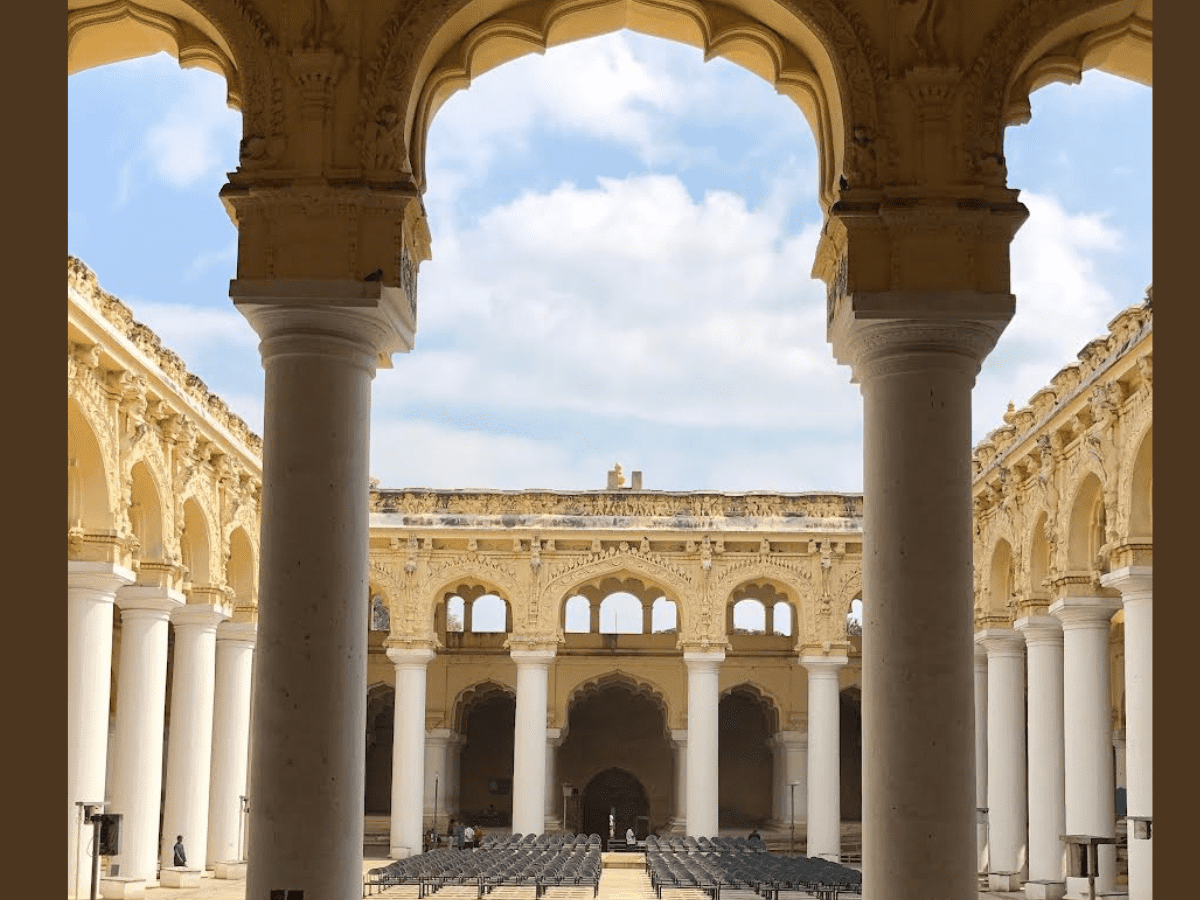
Often, we take the ageing wonders of the past as ruins, but they are hardly that.
Far from the dying remnants of yesteryears, they are the defiant souls that challenge the vagaries of time and elements. They are the transcendental symbols of human vision, which remains alive even if everything else around it collapses.
A monument is not just made of carved ceilings, intricate inlays, giant doors and colonnades or ornamental stuccos. It’s the vision of a dreamer who dared to bring it into reality. It speaks of his taste, class and ambitions. It is a living embodiment of the architect who left a piece of him behind for posterity to admire and ponder.
It not only takes us back in time, helping us conjure up the distant past, but it actually gives us a vision of the future that the builder saw.

Such is the story of Thirumalai Nayakkar Palace – a project of audacious vision and survival.
Though bereft of its original grandeur, the Madurai Palace or what remains of it is an architectural marvel for more reasons than one.
Built in 1636 by the greatest king of Madurai’s Nayak dynasty, Thirumalai Nayak, it is among the oldest surviving palaces in South India. It is also among the earliest monuments in South India with considerable European influences.
Designed by an Italian architect, the 384-year-old monument represents a fine blend of Dravidian, Islamic and Italian styles of architecture.

Restored and renovated periodically since the 19th century, first by the British Raj and then by the state archaeological department, only a quarter of the original structure is standing now.
Surprisingly, the downfall of this great palace wasn’t caused by the elements, it was the rather jealous and over-ambitious grandson of Thirumalai Nayak, who tore it down and took away all the jewels and ornaments of the palace to build his own fantasy in another city. His hubris-filled dream didn’t come to fruition and what we are left with now is the remnants of a battle between passion and mania.
Spread over 41,979 sqft, the palace stands on 248 pillars that rise up to 20 metres and have a circumference of 4 metres.
Built without a rafter or girder, this wonder has some stunning stucco works and magnificent arches. As a heritage lover, it’s easy to lose yourself in this forest of columns.
The Nayak dynasty ruled over much of present-day Tamil Nadu for almost 200 years from 1545 to 1740 and has left behind many of its monuments, built mainly by Thirumalai Nayak.



